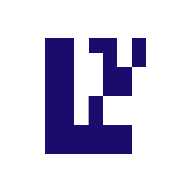The security of the double-layer Relayer of LayerZero ZK light node + oracle has withstood rigorous tests in the production environment, and no security incidents have occurred in the cross-chain bridge, a disaster area frequented by hackers.
However, the realization of this high security is a tradeoff between security, transparency and decentralization, which sacrifices transparency and decentralization to a certain extent. This has also been collectively questioned by the crypto community.
As a short-term solution, LayerZero launched a validator marketplace with 35 physical providers, where developers of oAPP (full-chain Dapp based on LayerZero) can freely choose a validator that meets their needs.
Now LayerZero is working with EigenLayer to introduce a new primitive, the crypto-economic DVN, to the LayerZero validator market. And this will be the first DVN instance.
The crypto-economic DVN (decentralized verification network) framework is a new primitive introduced by EigenLayer, which allows the economic security of cross-chain bridge Relayers enhanced by staking diversified assets.
LayerZero DVN will permissionlessly allow anyone to stake ZRO, EIGEN, and ETH into the staking smart contract. If an inconsistent data package is detected, ZRO holders can vote to decide whether the staked assets should be slashed.
LayerZero DVN introduces four key mechanisms: staking, validation, veto, and slashing.
--Staking: Stakers lock assets (such as ZRO, EIGEN, or ETH) in DVN's AVS. These assets act like a "security deposit" for DVN, ensuring that they will behave.
--Verification: A user or application can trigger a round-trip message, starting from Ethereum, passing through the source chain and the target chain, and finally returning to Ethereum. This process verifies whether the data packet hash transmitted and verified by DVN is consistent with the record on the chain.
--Veto: If a problem with message verification is found, a separate veto contract on Ethereum will be triggered. Token holders can vote on whether the stake of the offending DVN should be cut. This veto mechanism is important because sometimes blockchain reorganizations may cause data packets to not match, but this does not mean that the DVN is acting maliciously.
--Slashing: If the veto confirms that the data packet does not match, the assets staked in the AVS of DVN will be slashed. This is the ultimate punishment for bad actors.
In DVN’s technology stack, the role of the Ethereum mainnet is to serve as the final settlement layer for cross-chain message verification, which is the source of DVN’s trustless nature.
By introducing DVN, LayerZero can effectively minimize the trust of the Relayer layer, enhance the transparency of cross-chain messages, and reduce the consensus cost of the system. EigenLayer finds practical application scenarios and representative examples for the AVS (superset of DVN) primitive. The cooperation between the two will be a win-win game result.
The end.







